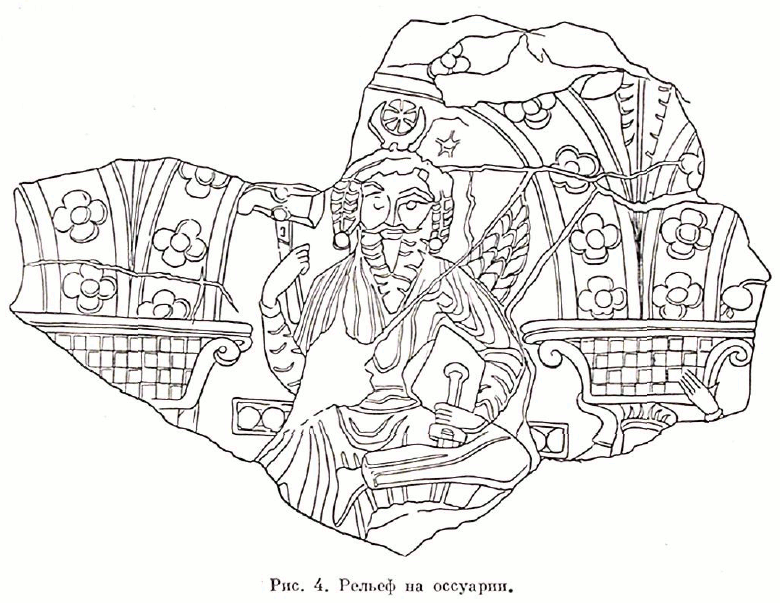
Create an Amazon Business Account
Drawing of a Sogdian Ossuary from Biya-Nayman.

Figure 4. Relief on the ossuary.


[The ossuary is compared to the left-hand king on the Rings and Dragons Cycle, The Two Kings Feasting. Sogdian Mural from Panjakent, Sector VI, Room 1, c. 700-722AD. Tajikistan National Museum of Antiquities, Dushanbe.]
The painting of Panjikent shows a very definite manner of sitting on crossed legs. Here the king is depicted sitting on a stool, freely placing one leg on the knee of the other. The king's stool is also unusual. It is a narrow bench with crossed legs, reminiscent of antique armchairs, distinguishes the figure of the king from other similar images and an interesting piece of weaponry, which he holds in his left hand, namely, a very ceremonial hatchet.
We find a strikingly close parallel for the figure of the king on one fragment of an ossuary originating from Biya-Naiman, which was first published and analysed in detail from an iconographic point of view by L. Ya. Borisov1. On the ossuary (Fig. 4), as well as on our painting, we see the figure of a bearded king, sitting with one foot on the knee of the other. Images of crowns and weapons match. However, it is especially characteristic that the king also holds an axe in his hand on the fragment of the ossuary. Upon closer examination, the stools on which the figures sit are also completely similar. True, the lower part of the stool has not been preserved on the fragment of the ossuary. However, the board is shown as narrow as in the paintings. In both cases, the board is ornamented in almost the same way. The only difference is that on the painting the board is ornamented with a strip of heart-shaped figures, while on the ossuary it is decorated with a strip of circles.
1 A. Ya. Borisov, On the Interpretation of Images on Biya-Naiman Ossuaries. Vol. II, Plate II
Source: pp. 34-36, Akademiya Nauk CCCP, Skulptura i Zhivopis Drevnego Pyandzhikenta (Moscow 1959)
Referenced as figure 62 in The military technology of classical Islam by D Nicolle
62. Relief on an ossuary, 5th to 7th centuries AD, Uzbekistānī, Hermitage, Leningrad (Aka S).